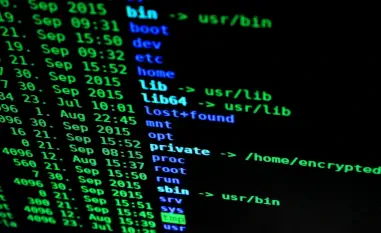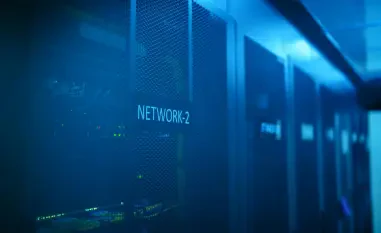I’m thrilled to sit down with Malik Haidar, a seasoned cybersecurity expert whose work has been instrumental in safeguarding multinational corporations from sophisticated cyber threats. With a deep background in analytics, intelligence, and security, Malik brings a unique perspective on integrating business needs with robust cybersecurity strategies. Today, we’re diving into the alarming trends in data breaches, the vulnerabilities of small and medium-sized businesses, the industries most at risk, and the innovative tools being developed to combat these threats, including insights into real-time dark web monitoring and proactive protection strategies.
Can you walk us through the concept of dark web monitoring services and why they’re becoming so critical in today’s cybersecurity landscape?
Absolutely. Dark web monitoring services are tools that scan the hidden corners of the internet—places where cybercriminals trade stolen data like email addresses, passwords, and even sensitive records. These platforms are critical because breaches often go undetected by companies for weeks or months, while hackers are already selling the data. By monitoring these underground markets in real time, we can spot compromised information early and alert businesses or individuals before the damage spirals out of control. It’s about shifting from reactive to proactive defense, which is essential in a world where over 300 million records have been exposed just this year.
What’s driving the massive scale of data breaches we’re seeing, with hundreds of millions of records compromised annually?
The scale is staggering because cybercriminals have become incredibly sophisticated, using automated tools to exploit vulnerabilities at a rapid pace. A big driver is the sheer volume of data we generate and store online—every email, transaction, or health record is a potential target. Plus, many organizations, especially smaller ones, lack the resources or awareness to implement strong defenses. Email addresses, for instance, are in every breach because they’re the gateway to accounts, making them a prime target for phishing or credential stuffing attacks. It’s a perfect storm of opportunity for hackers and gaps in protection.
Why do you think small and medium-sized businesses are bearing the brunt of these attacks, making up such a large percentage of breach incidents?
Small and medium-sized businesses, or SMBs, are often seen as low-hanging fruit by cybercriminals. Many of these companies, especially those with 10 to 249 employees, don’t have dedicated cybersecurity teams or budgets for advanced tools. Unlike larger corporations, they might not even have basic measures like employee training or multi-factor authentication in place. Hackers know this and target them with ransomware or phishing schemes, betting on quick payouts or easy access to valuable data. It’s a harsh reality that nearly half of all breaches hit this group.
Retail and wholesale trade sectors seem to be prime targets for hackers. What makes this industry so vulnerable to cyber threats?
Retail and wholesale trade are attractive targets because they handle a goldmine of data—customer payment details, contact information, and transaction histories. These sectors process high volumes of transactions, often through online platforms that can have weak points if not secured properly. A single breach can yield thousands of credit card numbers or personal details, which are incredibly valuable on the dark web. Plus, during peak seasons like holidays, the rush to meet demand can lead to overlooked security updates or rushed processes, making them even more vulnerable.
With sensitive data like government or health records being exposed in over a third of breaches, how severe is the impact on individuals and society at large?
The exposure of government or health records is deeply concerning because it’s not just about financial loss—it’s about personal safety and trust in institutions. When health data is leaked, it can lead to blackmail or discrimination if sensitive conditions are exposed. Government records, like Social Security numbers, can fuel identity theft on a massive scale, taking years to resolve. For society, it erodes confidence in systems meant to protect us, and the ripple effects can include policy changes or even geopolitical risks if state-level data is involved. The stakes couldn’t be higher.
How can early warning systems from dark web monitoring make a real difference for businesses or individuals who’ve been breached?
Early warning systems are game-changers. By scanning dark web marketplaces in real time, we can detect when stolen data first appears—often before the affected company even knows they’ve been hit. This gives victims a head start to change passwords, secure accounts, or notify customers before hackers exploit the data further. For businesses, it can mean containing a breach before it escalates into a PR disaster or major financial loss. For individuals, it’s about preventing identity theft or fraud by acting fast. Timely alerts can literally save livelihoods.
What practical steps can smaller businesses take to bolster their defenses, especially when they might not have the budget for high-end cybersecurity solutions?
Smaller businesses don’t need deep pockets to improve their security—they need smart, prioritized actions. First, focus on the basics: enforce strong, unique passwords and enable multi-factor authentication across all accounts. Train employees to spot phishing emails, since human error is a huge entry point for attacks. Use free or low-cost tools to monitor for suspicious activity, and regularly back up data to minimize damage from ransomware. Partnering with managed service providers can also offload some of the burden affordably. It’s about building a culture of vigilance, even on a tight budget.
What is your forecast for the future of data breaches and cybersecurity strategies over the next few years?
I think we’re going to see data breaches grow in both scale and complexity as cybercriminals leverage AI and automation to target vulnerabilities faster than ever. We’ll likely see more focus on niche industries or critical infrastructure, where the impact is devastating. On the flip side, cybersecurity strategies will evolve with better integration of real-time monitoring and predictive analytics to anticipate attacks before they happen. I expect regulations to tighten, pushing companies to prioritize security or face hefty fines. The battle will intensify, but so will our tools and resolve to fight back.













